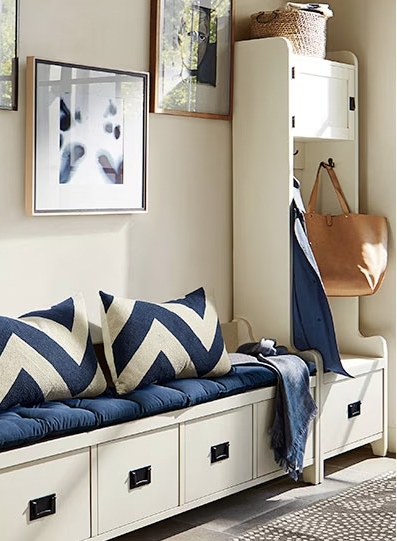Between the sheer variety of shades available and the long-term commitment, it’s easy to feel overwhelmed when picking paint colors. Unlike decorative accents, which can be moved and exchanged easily, wall color is a longer-term choice. The good news: we’re here to help.
Neutral, But Not Boring
Neutral colors are some of the most versatile paint options available and for a good reason. These colors can skew warm or cool and pair beautifully with a wide range of colors. You’ve got plenty of options from trendy taupes to a classic, bright white. Greys are popular hues that, as a neutral, can take on earthy, airy, or dramatic tones depending on the intensity and shade.
If you’re considering a neutral tone, be aware that paint swatches are a good starting point, but the paint color may look completely different than in the paint store. Paint a couple of paint samples on the wall or tape the paper swatch up to see how it looks at other times of the day.
Find a Pattern
Do you have a favorite pattern in the room or a favorite piece of artwork? If so, choose one of the colors you like best from that piece and apply it to the wall. If you’re redoing the whole room, shop for new pillows, rugs, window treatments, or decorative accents. Pull your paint color inspiration from the piece that adds the most significant pattern to the room. If you want to stick with neutral colors, look to the white and beige tones in the design.
Gauge the Mood
Whenever you decorate a room, you create ambiance with the colors, patterns, textures, and lighting you choose. Think about the mood you want to complete in the room before shopping for paint. For example, soft colors and neutrals typically add a restful, soothing mood to a bedroom, while dark, bold colors add drama. Warm and contrasting colors invite a socializing effect, while neutrals often add a formal feel. Match the color scheme to the mood you want to create for painting success.

Consider the Lighting
Lighting is a significant factor for painters everywhere, and it’s one of the main reasons that professionals suggest testing the color with a swatch or sample before you start brushing or rolling it on the walls. Lots of natural light shows the color in its most valid form, while fluorescent lighting adds blue tones and incandescent lighting enhances yellow tones and warmth. For example, bright or intense colors can look overpowering when you paint them on a wall near a bank of windows, but the same color could be gorgeous on an accent wall. Likewise, that white or beige you painstakingly might end up looking yellow or blue, depending on the proximity of the nearest lamp. Always test the color out on each wall before getting started.
Follow the 60-30-10 Rule.
Many designers rely on the 60-30-10 Rule to choose their color scheme for a room. In this case, 60 percent of the room should be the dominant color, which means that your wall color should be the dominant color. A secondary color should make up 30 percent of the room. Secondary colors typically come from your furniture upholstery. Accessories should bring in an accent color, representing only 10 percent of the room’s color scheme. This ratio produces a well-balanced palette that pulls everything together in an eye-pleasing way while still having a little pop of color.
Choosing the perfect paint color doesn’t have to be a daunting task. By considering the versatility of neutrals, drawing inspiration from patterns, setting the right mood, accounting for lighting conditions, and following the 60-30-10 Rule, you can create harmonious spaces that reflect your style. Remember, it’s not just about finding a color you love; it’s about finding one that complements the overall aesthetic and atmosphere you want to achieve in your home.
For more inspiration and tips on interior design, check out resources like Interior Design Magazine and HGTV. Happy painting!




